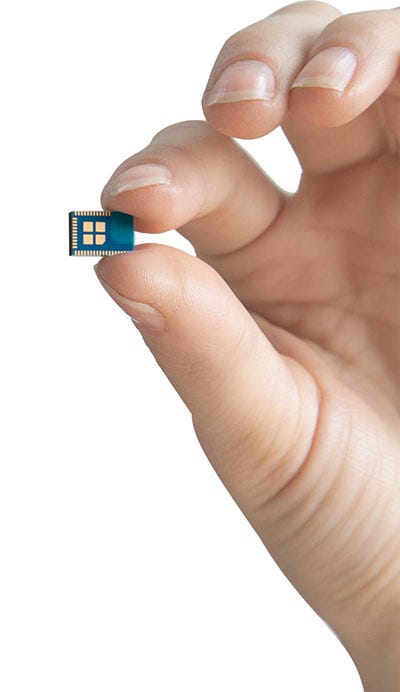This Hybrid Technology Works Like an IoT Universal Remote
A California company thinks it has a solution to the biggest problem in IoT.
April 6, 2017

Imagine it’s 2022 and you have awoken to an Internet of Things nightmare. Your house is equipped with hundreds of smart devices, but each of them must be controlled with separate apps. Turning up your thermostat? There’s an app for that! Making a cup of coffee? There’s an app for that! Turning on your lights? You get the picture… And so do hackers from half-way across the world. They have broken into your network and have decided to flip off your thermostat in the dead of winter. And demand that you pay up to have it turned back on.
We are stunned: why is no one else talking about this?
Then you notice that you’re late for work. You head to the subway, and once you arrive, you see a sign declaring that you now need an app to see when the next trains arrive. You would hail a cab, but you would need an app for that, too. So you grit your teeth and hop on a subway headed to your job at an industrial facility in the outskirts of town. After you arrive, your boss informs you that all of the machines in the building are now app-controllable and recommends that you download two dozen apps to control the various machines on the factory floor. You groan.
This nightmare is avoidable, says Erik Volkerink, PhD, the chief business officer of Heptagon (member of the AMS Group) and CEO of its RF Digital subsidiary, which has developed a combined hardware/software/mobile/cloud offering called Simblee (pictured below on the right). “The biggest problem in IoT is going from an average of five connected products in your household to 500,” he says, referring to a 2014 projection from Gartner that forecasted that the average household would have 500 smart devices by 2022. “People already complain there are too many apps,” says Volkerink. “The paradigm is running out of steam. This is the biggest need in IoT. We are stunned: why is no one else talking about this?”
 In Volkerink’s view, your smartphone should automatically sense any smart devices in your environment and give you an option to control them. “So you walk around, and you see that there is a light bulb and you have an option to turn it on or off. You stand in line at the subway, and they give you whatever they want to offer. You can engage with it like it is a normal app and then you walk away and boom, the app disappears. It doesn’t stay on your phone.”
In Volkerink’s view, your smartphone should automatically sense any smart devices in your environment and give you an option to control them. “So you walk around, and you see that there is a light bulb and you have an option to turn it on or off. You stand in line at the subway, and they give you whatever they want to offer. You can engage with it like it is a normal app and then you walk away and boom, the app disappears. It doesn’t stay on your phone.”
Volkerink also says the technology, known as Simblee, solves other problems—latency delays are essentially eliminated, and security is improved. “Right now with a smart lightbulb, my light signal needs to go to a cloud thousands of miles away. It just doesn’t make sense,” he says.
Because the app doesn’t run on the phone, developers don’t have to submit and wait for approval in Apple or Android app stores.
Volkerink also says that the technology makes app development simpler. It can enable engineers to build apps without using Xcode or the Android SDK. “You also don’t have to worry about the cloud, MySQL, Amazon, and the whole stack in the middle and the antenna design and the chips. It is very plug and play,” Volkerink says. “You can be up and running in two weeks. With some of the other solutions, it can take you nine months.”
There are many advantages to this model. Some companies, in the medical device field, for instance, don’t want to go to their customers who are buying pacemakers and say: “If you want to see what goes on with your pacemaker, you can go to this place where you can also download Angry Birds,” he says.
The interface for the technology is similar to an internet browser. “You basically browse the IoT world,” Volkerink says. “Whatever is in the environment pops up.”
[Related: How to Predict the Future]
The technology uses artificial intelligence to study user behaviors. “It finds the patterns. So after awhile, it sees that in the morning, you go in the kitchen, flip on the light, and make coffee,” Volkerink notes. “To me, that is the only way to go. The way we interface with the things around us must change. That’s pretty clear.”
Some technology pundits see voice recognition playing a greater role in future apps, while companies like Microsoft and Magic Leap are upbeat about the prospects of augmented and mixed reality technology.
RF Digital says its technology is flexible enough to handle the future, as it is designed to “connect everyone and everything through optical, imaging, audio and environmental sensors.”
About the Author
You May Also Like






